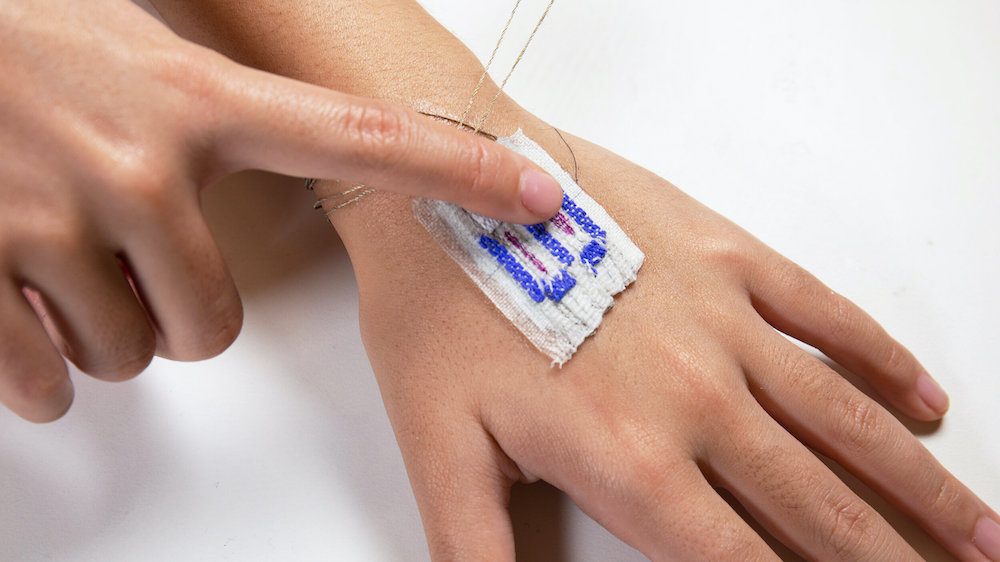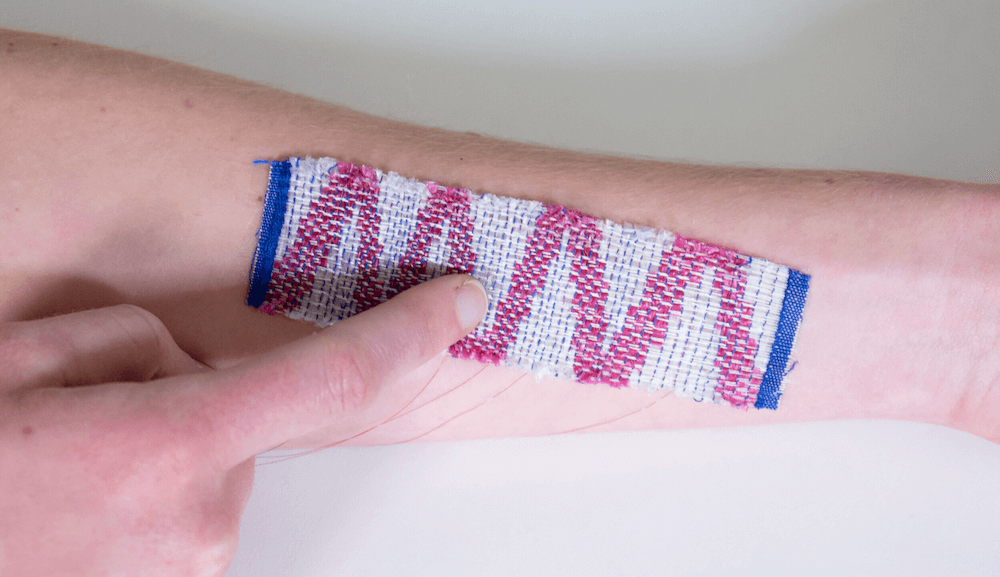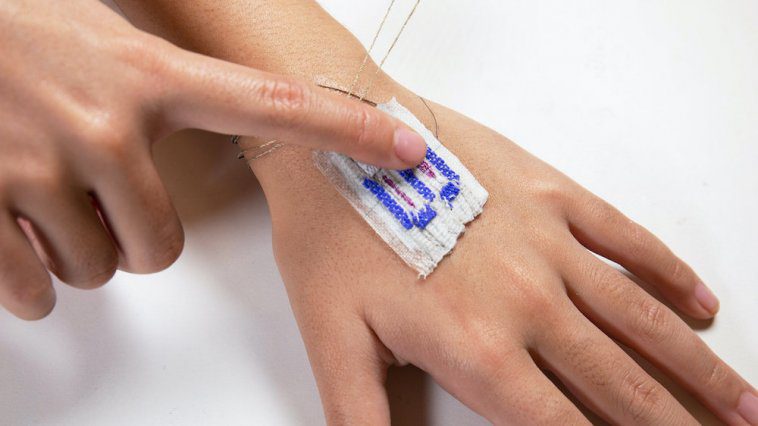Woven fabric becomes on-skin wearable interface
— October 14th, 2020

Researchers at Cornell University’s Hybrid Body Lab have been pursuing a novel woven interface that attaches to the user’s skin. Their aptly named WovenSkin integrates electronics into a fabric pattern, including capacitive sensing materials, shape-memory alloys (SMAs), and thermochromic materials to allow for both input and output functionality.

The “second skin” is connected to Arduino Mini, small LiPo battery, and a capacitive touch controller, enabling it to perform tasks such as transforming the woven output from a visible “8” to “9” after being touched just after 0:40 in the video below. Bluetooth can also be implemented for phone or laptop interactions.
The Hybrid Body Lab team’s full research paper is available here if you’d like to delve deeper into the WovenSkin project.
Weaving as a craft possesses the structural, textural, aesthetic, and cultural expressiveness for creating a diversity of soft, wearable forms that are capable of technological integration. In this project, we extend the woven practice for crafting on-skin interfaces, exploring the potential to “weave a second skin.” Weaving incorporates circuitry in the textile structure, which, when extended to on-skin interface fabrication, allows for electrical connections between layers while maintaining a slim form. Weaving also supports multi-materials integration in the structure itself, offering richer materiality for on-skin devices. We present the results of extensive design experiments that form a design space for adapting weaving for on-skin interface fabrication. We introduce a fabrication approach leveraging the skin-friendly material of PVA, which enables on-skin adherence, and a series of case studies illustrating the functional and design potential of the approach. To understand the feasibility of on-skin wear, we conducted a user study on device wearability. To understand the expressiveness of the design space, we conducted a workshop study in which textiles practitioners created woven on-skin interfaces. We draw insights from this to understand the potential of adapting weaving for crafting on-skin interfaces.
- Werbung -
Images: Hybrid Body Lab (CC BY-NC-SA 4.0)
Website: LINK


